
In the sweltering summer months or stuffy indoor settings, staying cool is a productivity booster and a health essential. While traditional desk fans have been a staple for decades, the rise of bladeless desk fans has revolutionised the way we think about personal cooling. Sleek, safe, and surprisingly powerful, these modern fans will transform your spaces.
At first glance, a bladeless desk fan might seem like magic. But behind the minimalist design is some clever engineering. These fans use a motor hidden in the base to draw in air, which is then amplified and pushed through a ring-shaped structure. The result is a smooth, uninterrupted stream of air – all without any visible blades chopping through the air.

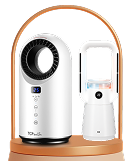
Choosing a bladeless fan isn’t just about picking the most expensive or the best-looking model – it’s about finding one that suits your space, your comfort, and your daily habits. Here are the key factors to consider before making a purchase:
Start with the size of the room. For small areas such as desks, bedside tables, or private studies under 10 square metres, a compact fan with a low to moderate airflow capacity will suffice. However, for rooms that are 15 to 25 square metres or larger, you’ll need a model that produces stronger airflow. A good indicator of strength is the air volume output — typically measured in cubic metres per hour (m³/h) or litres per second (L/s). Anything above 300 m³/h is considered suitable for medium-sized rooms, while outputs above 500 m³/h are better for larger or open-plan spaces.
Bladeless fans rely on air multiplication technology, which varies in efficiency. For effective cooling, look for fans with multiple speed settings — ideally three or more. This allows you to adjust based on temperature, humidity, and time of day. Entry-level fans may offer only minimal airflow, which is fine for occasional use, but if you need consistent cooling, opt for models that clearly state their airflow capacity or amplification factor. Avoid fans that list only vague terms like “strong breeze” without specific metrics.
If quiet operation is important — for example, in a bedroom, shared workspace, or baby’s room — you’ll want a fan with a low decibel (dB) rating. For reference, 30 dB is roughly the sound of a whisper, while 50 dB is similar to moderate rainfall. Anything under 45 dB on its highest setting is considered quiet for a fan. If the fan provides a range of sound levels for different speeds, look for 20–25 dB at the lowest setting for nighttime use. Avoid any model that exceeds 55 dB, especially if silence is a priority.
Oscillation — the ability for a fan to rotate and distribute air across a wider area — significantly improves coverage. For desk placement, a horizontal oscillation angle of 70° to 90° is often enough. If you intend to cool a broader space, look for both horizontal and vertical oscillation, which can circulate air more efficiently throughout a room. This is particularly helpful if more than one person is using the fan or if the air needs to reach across different elevations (e.g. over a bed or under a loft ceiling).
For convenience and energy savings, many bladeless fans offer timers that allow you to set automatic shut-off intervals. A good fan should offer at least 1 to 8 hours of timer options, especially if you use it overnight. Some models also feature sleep modes that gradually reduce fan speed while you rest. Additionally, consider the control interface — digital displays, remote controls, and touch panels add ease of use, while smart connectivity (via apps or voice assistants) is useful for those building a smart home setup.
If you live in an area with high pollen counts, pet dander, or urban pollution, it may be worth choosing a bladeless fan with air purification features. Some fans incorporate HEPA filters, which can trap up to 99.95% of airborne particles as small as 0.3 microns. These fans often serve dual purposes, combining cooling with improved indoor air quality. However, if allergies or pollution aren’t a concern, these extras may not be necessary — and will increase the cost.
Bladeless fans are generally more energy-efficient than traditional models, but there’s still variation. Look for fans that operate at less than 50 watts on their highest setting if energy saving is important to you. Those with eco or adaptive cooling modes will adjust the airflow automatically based on room temperature, reducing unnecessary power use. Some units will display estimated power consumption in real time, which can be helpful for keeping costs down during high-use periods like summer heatwaves.
Finally, don’t overlook size and aesthetics. If the fan will sit on a small desk, measure your available space and make sure the base footprint fits within it. Bladeless fans typically range from 30 cm to 1 metre in height. Choose a height and form that won’t obstruct your work area or line of sight. Style also matters — fans often become a permanent fixture in a room, so it’s worth selecting one that complements your interior, whether you favour minimalist, industrial, or modern décor.
Bladeless desk fans are more than just a stylish upgrade — they offer a practical, quiet, and efficient way to stay cool. By focusing on important factors like airflow output, noise levels, and energy usage, you can confidently choose a model that fits your lifestyle. Whether you’re working, relaxing, or sleeping, the right fan will quietly enhance your comfort all year round.
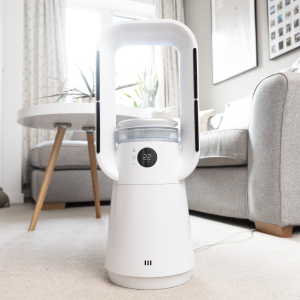
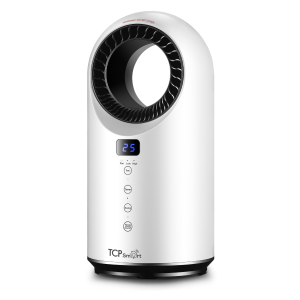
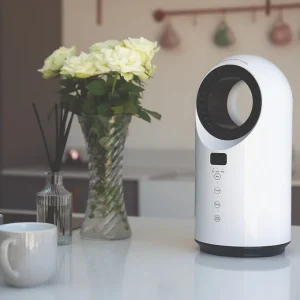
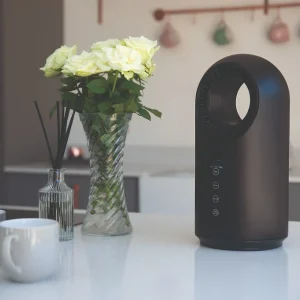

All rights reserved 2025